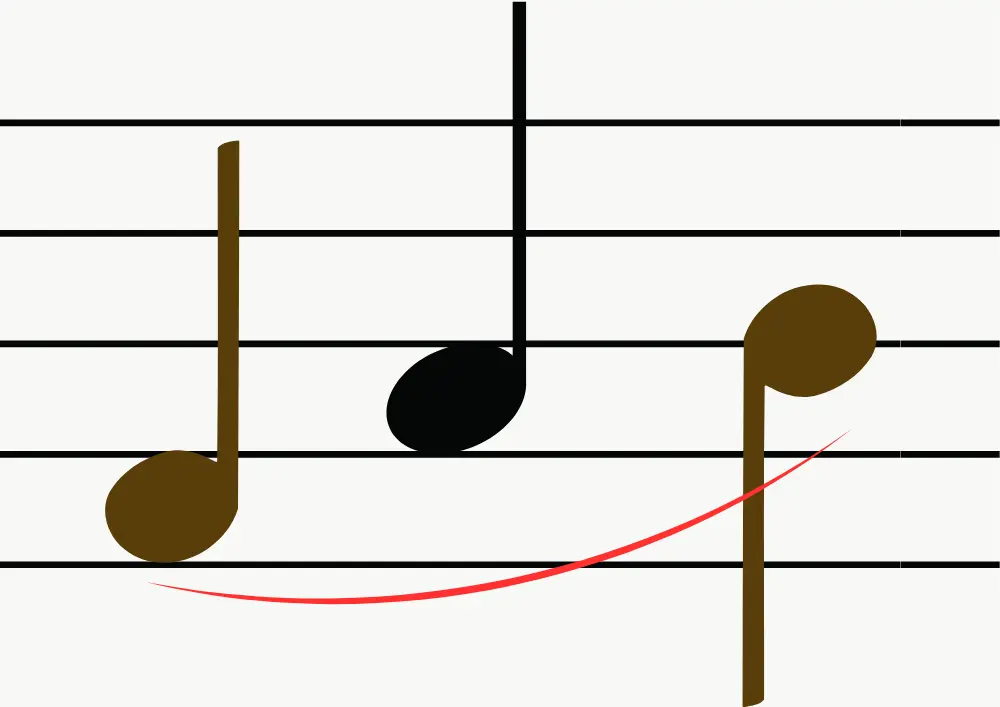- Legato Definition
- Vocal Techniques required to learn Singing Legato Technique
- Exercises to learn Legato in Music
- Common challenges to watch out for!
- Sufficient breath for efficient Legato technique
- Vocal Agility for Adapting Changes
- Dynamics and Phrasing for Expressive Legato
- Shaping Vowels for Proper Resonance
- Notable Artists Singing Legato Technique
- Closing Thoughts
- FAQs
Three vocal techniques rule the world of Bel Canto! Legato, Staccato and Vibrato. Mastering the skill of singing begins at blending all these vocal techniques. I’ll take you through the artistic interpretation of Singing legato technique.
We need to begin with what legato technique means and why it is important.
Legato Definition
Legato is an Italian word meaning ‘Tied Together’. In music it implies that the notes are to be sung or played smoothly and continuously. Therefore, legato’s definition is to sing or play smoothly. It’s an essential part of singing to singers of any level to communicate the melody with a touch of continuity and the right expression. The greatest challenge is maintaining the true tone while blending the voice registers while singing in legato technique.

Legato is an articulation mark denoted by a slur or the indication of the word legato in a music sheet. The idea of the technique is to sustain notes with the help of vowel sounds without any interruption of consonants. This idea was initially taken from the concept of Bel Canto. Singing legato technique is a must for any classical singer. It is usually used in places without a clear articulation mark in western classical music.

Did You Know?
Fundamental concept of Bel Canto was the Legato technique in the early 18th century and the 19th century among the singers and vocal tutors.
Vocal Techniques required to learn Singing Legato Technique
- You must concentrate on having a steady and controlled breath support to sustain notes and phrases evenly. Make sure you use diaphragmatic breathing and engage core support to have an even flow while singing legato notes.
- Phrasings in the music need to be followed quite strictly. It is okay if there is slight overlapping of notes because singing legato technique is all about connecting notes smoothly.
- You must be careful about not making sudden changes in the volumes and while using dynamics. Somewhat steady tone in terms of volume is recommended.
- Another important technique to look for is the vowel placements. You need to concentrate on proper shaping of vowels and consonants since connecting notes using the vowels without the interruption of constants is an essential aspect of legato in music.
- Smooth transitions between voice registers lets you avoid cuts in singing in legato. Voice registers blending is yet another important requirement while singing legato technique.
Exercises to learn Legato in Music
Scales
Try ascending and descending scales by humming or in the sounds of vowels. Make sure you connect and glide through the notes.
Sustain Notes
Start at a comfortable key and sustain the note at least for 13-15 seconds. All you need to concentrate on is to keep the tone smooth and steady throughout the exercise.
Practice Portamento
Slide through small intervals like half steps or whole steps in a very slow tempo. You can try this in bigger intervals too. This will help you have control over pitches while connecting them.
Breathing exercises
As legato singing technique requires consistent breath flow, any breathing exercise will help you have controlled breath support. Begin with sustaining any note in a vowel sound or “SSSS” sound with teeth closed for at least 13-15 seconds.
Lip and Tongue Trills
Trills make your vocal cords and the muscles around it relaxed. Tension free muscles produce smooth vocal tone and therefore, boost legato singing.

Did You Know?
Legato comes from an Italian word “Legare” meaning ‘to bind’.
Common challenges to watch out for!
Challenges are what make any learning process interesting and overcoming them makes everything worth it!
Learning and singing legato technique does have some challenges but nothing can be difficult with consistent practice and doing that right..
Sufficient breath for efficient Legato technique
To me, learning to control my breath was a difficult task. Legato’s definition is connected fluid phrases. In order to have a steady airflow for the notes sung smooth and connected did require strengthening my breath support. If you also have such a problem, you must turn your attention to diaphragmatic breathing with core support. Taking in sufficient breath to support longer phrases needs mastering breathing exercises.
Vocal Agility for Adapting Changes
Vocal flexibility could be a major problem for some learners. You should be able to sing notes seamlessly especially while singing larger intervals. Yet another challenge would be adapting to changes in the dynamics without breaking the flow and without disrupting the resonance. Maintaining a good pitch accuracy while singing legato technique also requires your attention.
Dynamics and Phrasing for Expressive Legato
Expressive singing always turns the attention of the audience towards you. Perfecting singing legato technique along with the expressions is just another commonly faced challenge. You need to make sure you have a proper understanding of Dynamics in Music and the phrasing techniques. Remember to form proper phrases with subtle variations in the volume when it comes to legato. This will help you emote in an expressive way.
Shaping Vowels for Proper Resonance
Difficulties in placing and modifying vowels and consonants will affect smooth flow of Legato. It also hinders the resonance bit. So you need to be careful about managing vowels and consonants in the lyrics for a fluid flow of resonance and clearcut phrasing. This will also help in proper breath control.
Notable Artists Singing Legato Technique
My Heart Will Go On by Celine Dion
My Heart Will Go On by Celine Dion is an excellent example of singing legato technique. It has a perfect blend of dynamics and phrasing techniques. Dion’s transitions from chest to head voice while using legato technique is yet another notable element of this song.
Unchained Melody by Righteous Brothers
Bobby Hatfield shows an exceptional control over his voice during the glides between larger intervals and smoothly connecting the notes.. You would also notice the effortless transitions between registers with proper handle on dynamic markings especially on sustained notes.
Closing Thoughts
Overcoming these difficulties do take time. Little bit of consistent practice can do wonders. Reading articles about the techniques does help. Also Appropriate guidance from an experienced professional can help you brave the storm easily! Book a Free Demo with us Today!
FAQs
How to practice legato technique?
You can practice legato by starting to connect notes and it smoothly with the help of supported breathing.
What are some exercises for improving legato singing?
Gliding through notes of scales and arpeggios and lip trills are some of the exercises for legato.
What is the difference between legato and staccato?
Legato is connecting notes and singing smoothly while staccato is breaking notes and singing briefly.
How do you play legato and staccato on the piano?
Legato on piano is overlapping sustain and playing notes smoothly. Staccato in piano playing sharply by lifting fingers quickly.
What does legato mean in music?
Legato definition is to connect the notes and sing or play smoothly.

































